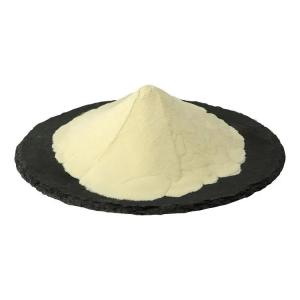News list
News Center
Hot Product
News
Phosphoric acid in the design of healthy diets
Time:2025-10-20
1. Introduction
Phosphoric acid, a common inorganic acid composed of phosphorus, oxygen, and hydrogen, plays an important role in both food formulation and nutritional science. Beyond its industrial applications, it is widely used in food products for its acidity regulation and preservative properties. In the context of healthy diet design, understanding phosphoric acid’s characteristics and its interactions within food systems is essential for achieving balance and safety.
2. Chemical Nature and Food Presence
Phosphoric acid (H₃PO₄) is a colorless, odorless, and moderately strong acid that is highly soluble in water. In the food industry, it is classified as an acidity regulator and flavoring agent. It is often used in beverages, processed cheese, and certain baked goods to control pH levels and maintain product stability. Its derivatives, such as phosphates, are also found naturally in many foods, including meat, fish, nuts, and grains.
3. Role in Food Formulation
When used in food production, phosphoric acid contributes to taste balance and preservation. By adjusting acidity, it enhances flavor consistency and prevents microbial spoilage in acidic beverages and syrups. Additionally, it can help stabilize emulsions and maintain texture in dairy and processed food items. These technological roles make phosphoric acid a key ingredient in modern food formulation strategies.
4. Phosphorus and Nutrition Considerations
Phosphorus, the elemental component of phosphoric acid, is an essential mineral that supports cellular energy metabolism, bone structure, and genetic material formation. However, while natural phosphorus from whole foods contributes to healthy nutrition, excessive intake of inorganic phosphates from additives should be carefully monitored. Dietary planning that emphasizes whole, unprocessed foods naturally ensures a balanced phosphorus intake.
5. Designing Balanced Diets
In the development of healthy diet frameworks, the inclusion of foods containing natural phosphorus sources is encouraged. At the same time, it is important to regulate foods with added phosphoric acid or phosphate salts to maintain nutrient balance. Dietitians and food technologists can collaborate to design meal plans and processed foods that respect both nutritional and functional needs, using phosphoric acid responsibly.
6. Conclusion
Phosphoric acid occupies a dual position in food science — as a valuable ingredient for food stability and as a source of an essential mineral. In healthy diet design, the key lies in balance: leveraging its technological benefits while prioritizing natural nutrient sources. Thoughtful use of phosphoric acid ensures that modern diets remain both safe and nutritionally sound.
Phosphoric acid, a common inorganic acid composed of phosphorus, oxygen, and hydrogen, plays an important role in both food formulation and nutritional science. Beyond its industrial applications, it is widely used in food products for its acidity regulation and preservative properties. In the context of healthy diet design, understanding phosphoric acid’s characteristics and its interactions within food systems is essential for achieving balance and safety.
2. Chemical Nature and Food Presence
Phosphoric acid (H₃PO₄) is a colorless, odorless, and moderately strong acid that is highly soluble in water. In the food industry, it is classified as an acidity regulator and flavoring agent. It is often used in beverages, processed cheese, and certain baked goods to control pH levels and maintain product stability. Its derivatives, such as phosphates, are also found naturally in many foods, including meat, fish, nuts, and grains.
3. Role in Food Formulation
When used in food production, phosphoric acid contributes to taste balance and preservation. By adjusting acidity, it enhances flavor consistency and prevents microbial spoilage in acidic beverages and syrups. Additionally, it can help stabilize emulsions and maintain texture in dairy and processed food items. These technological roles make phosphoric acid a key ingredient in modern food formulation strategies.
4. Phosphorus and Nutrition Considerations
Phosphorus, the elemental component of phosphoric acid, is an essential mineral that supports cellular energy metabolism, bone structure, and genetic material formation. However, while natural phosphorus from whole foods contributes to healthy nutrition, excessive intake of inorganic phosphates from additives should be carefully monitored. Dietary planning that emphasizes whole, unprocessed foods naturally ensures a balanced phosphorus intake.
5. Designing Balanced Diets
In the development of healthy diet frameworks, the inclusion of foods containing natural phosphorus sources is encouraged. At the same time, it is important to regulate foods with added phosphoric acid or phosphate salts to maintain nutrient balance. Dietitians and food technologists can collaborate to design meal plans and processed foods that respect both nutritional and functional needs, using phosphoric acid responsibly.
6. Conclusion
Phosphoric acid occupies a dual position in food science — as a valuable ingredient for food stability and as a source of an essential mineral. In healthy diet design, the key lies in balance: leveraging its technological benefits while prioritizing natural nutrient sources. Thoughtful use of phosphoric acid ensures that modern diets remain both safe and nutritionally sound.


 CN
CN





